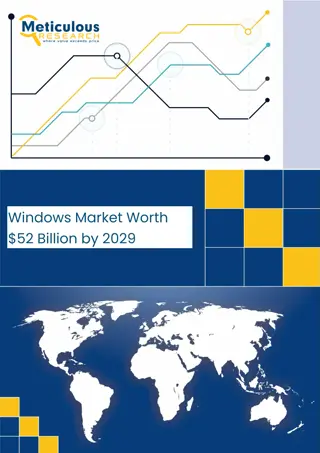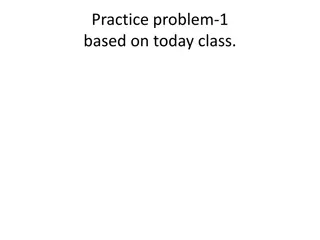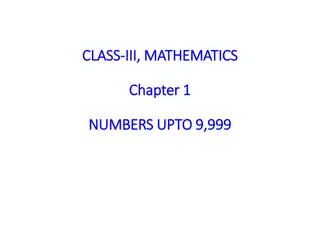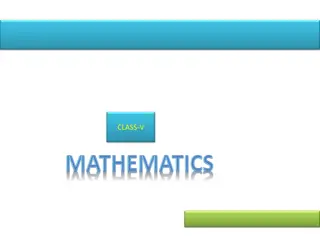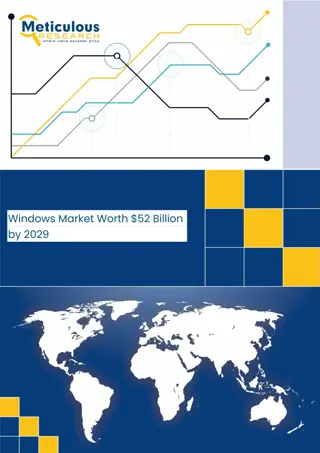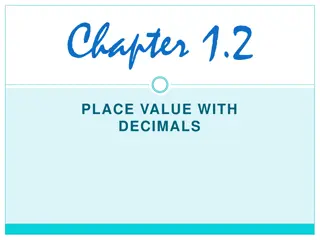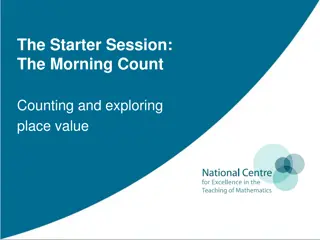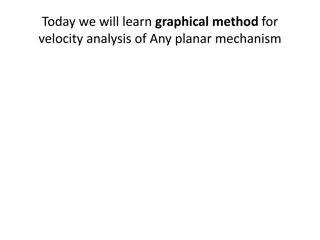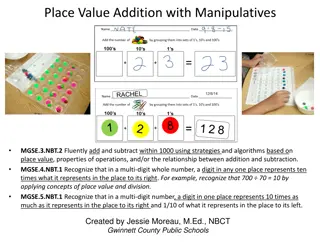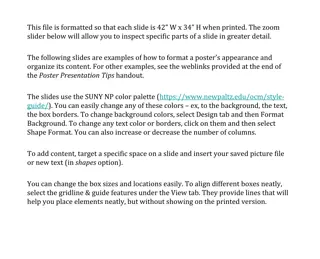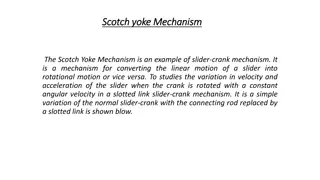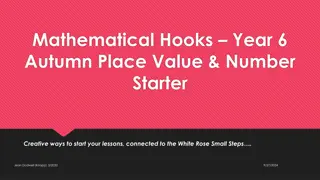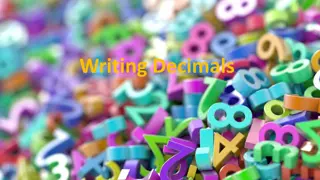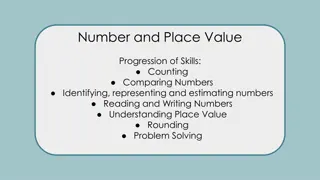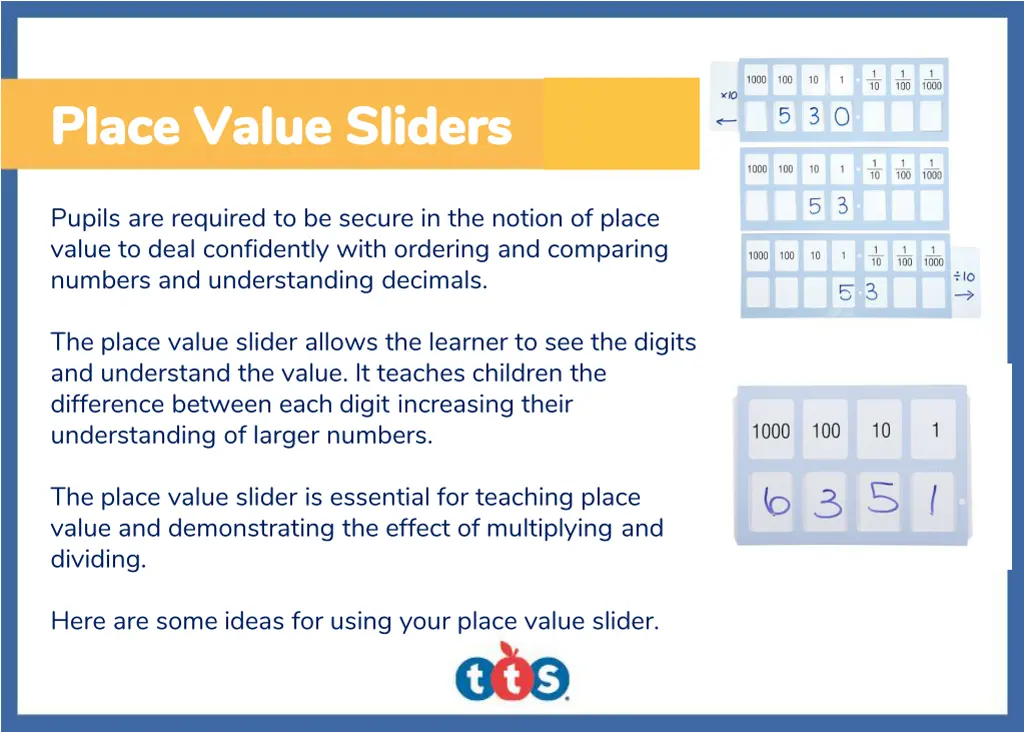
Engaging Place Value Activities for Teaching Numbers and Decimals
Enhance students' understanding of place value and decimals with fun activities using a place value slider. Explore games like Follow the Leader, Number Stories, Dice Match, and Zero Rules to make learning interactive and enjoyable.
Download Presentation

Please find below an Image/Link to download the presentation.
The content on the website is provided AS IS for your information and personal use only. It may not be sold, licensed, or shared on other websites without obtaining consent from the author. If you encounter any issues during the download, it is possible that the publisher has removed the file from their server.
You are allowed to download the files provided on this website for personal or commercial use, subject to the condition that they are used lawfully. All files are the property of their respective owners.
The content on the website is provided AS IS for your information and personal use only. It may not be sold, licensed, or shared on other websites without obtaining consent from the author.
E N D
Presentation Transcript
Place Value Sliders Place Value Sliders Pupils are required to be secure in the notion of place value to deal confidently with ordering and comparing numbers and understanding decimals. The place value slider allows the learner to see the digits and understand the value. It teaches children the difference between each digit increasing their understanding of larger numbers. The place value slider is essential for teaching place value and demonstrating the effect of multiplying and dividing. Here are some ideas for using your place value slider.
Follow the Leader Follow the Leader Choose one child to be the leader. Everyone starts by writing the same number on their slider. The leader calls out instructions for the others to follow. For example: Divide by 10. Multiply by 100. Continue for as many instructions as you wish. Stop and check does everyone have the same number at the end?
Number Stories Number Stories Make up a story to read aloud. Ask the children to follow along, moving their sliders accordingly. You can adapt your stories to make them as simple or as complex as you like. Alternatively, children could make up their own stories to share. For example: One day some giants were having a party. There were 12 of them and they decided they would need 3 cakes each. (Children write 36 on the slider) The chief giant suddenly remembered that some of his cousins would be coming too. Let s times that number by ten, he said, Just to be on the safe side. (Move the slider one place to the left and add a zero - 360) But some of us are on diets, said a slightly smaller giant. I think we need to take 100 away from that number. (Rub out 3 and replace with 2 - 260) Nonsense, said a third, My grandma could eat the whole lot on her own and we ll all want to take some home. I say we multiply it by ten again. (Move the slider one places to the left - 2600) Now how many shall I order?
Dice Match Dice Match You will need: A seven-space place value slider An ordinary dice 5 folded pieces of paper with one instruction on each multiply by 10, multiply by 100, divide by 10, divide by 100, stick. Throw the dice 3 times. On each throw, individuals should write that number on any of the middle 3 sections of the slider. When the three digits are all in place, each child chooses a piece of paper with an instruction and moves their slider accordingly. The winner is the person with the highest number.
Zero rules! Hero Zero Zero rules! Hero Zero Zero is nothing, zilch, empty, nothingness. Yet it is so important. A zero after any number can drastically change its value. Zero Talk about the importance of zero and how without it, our decimal system would not work. I am zero - some say I am nothing, You might think I would be sad. When multiplying and dividing using a slider, talk about the role of the zero to make sure the number is correct. The other numbers stand for things, They say, It s just too bad. Imagine a zero could talk! What do you think it would say? But I am very happy, and I tell them: Have you thought Here is a starter for you: About the biggest numbers in the world? Like a million or a billion. They couldn t exist without me.
The numbers are revolting! The numbers are revolting! Ask children, What would happen if place value headings changed places? Tell a story about how a group of place value headings were fed up of always being in the same place and wanted a change! Ask children to write them in their sliders in a different order (adapting to suit the year group). Example 2 Example 1 T H O Th Ones Tens 2 6 3 5 The children write numbers underneath. Can they say what this number would be? 7 8 Twenty, six hundred, three and 5 thousand! How would they say the number now? Can other children write the number as it should be? (5623) "Seven eighty"
Making Numbers Making Numbers Largest Even Number Use the digits 4 and 8 and a digit of your own choice. Enter the largest 3-digit number you can make that is also a multiple of 2. Can you set up new challenges for your friends? Try making numbers that are multiples of 4/6/8 Four Card Number Choose four number cards. For instance: 2, 3, 4 and 7 Use each card once to make a 4-digit number. Who can make the largest number? What is the smallest even number you can make? Make new rules and create new numbers.
Whats the Value? What s the Value? What is the value of the 3 in 192.365? In the number 3.629, what is the value of the digit 2? In the number 18.074, what is the value of the digit 4? Max, Pip and Jay all took part in the school race. Max s time was 14.56 secs, Pip s time was 14.546 secs and Jay s time was 14.556 secs. Who completed the race in the quickest time? Make up some more questions for a friend to try.
Number Magic Number Magic Think of one of the numbers from 1 to 9. Use place value slider to help you see what is happening to each of the digits as you add 9. Add 9 to your number. Add the digits of your answer together. What is your new number? What do you notice? A solid understanding of place value is vital to allow children to competently add, subtract, multiply and divide. Use your Place Value Sliders to demonstrate the value of each digit in a number. Try the trick again with a new starting number from 1 to 9. What do you notice now? Will this always happen if you start with a number from 1 to 9?



